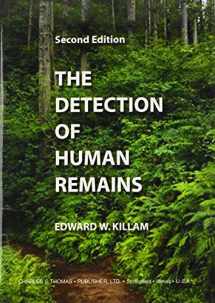
The Detection of Human Remains
Book details
Summary
Description
This updated edition represents an innovative book that has been used by forensic specialists for over a decade. It is intended to be used as a guide to the various methods for locating human remains. Most of the information is applicable to both archaeological and forensic situations. The intended audience are those who become actively involved in the hunt for human bodies, such as historic and prehistoric archaeologists and the law enforcement community, including coroner or medical examiner investigators and search and rescue teams. The book contains guidelines for the investigation of missing-person or homicide cases that require comprehensive body search planning. The core is a guide to methods for locating surface and buried bodies. The methods considered include ground contact, proximate and remote sensing techniques. The categories of methods are non-intrusive pedestrian searches, surface-penetrating ground searches, geophysical prospecting techniques, remote-sensing methods, aerial photography and interpretation, and parapsychological techniques. The author lists six objectives in preparing this work. The first is to assemble basic information on search methods and condense that information into a single source that can be a ready reference for practitioners. Secondly, it is hoped to provide sufficient information for practitioners to try and use the 'do-it-yourself' techniques. The third objective is to provide decision-makers with guidelines for recognizing a situation that needs outside consultants. Accordingly, the fourth objective is to provide the data necessary to balance time, manpower, and costs against expected results. The fifth objective is to assist an investigator in compiling his own set of standard operating procedures for a search effort. And the final, sixth objective is to provide a list of references for investigators who want additional information. There are 87 illustrations in the book and there is also a new section on penetrometer technology. An appendix contains planning data sources, forensic geology and geophysics checklists, search factors for consideration, lost persons report, the Necrosearch Clandestine Grave Questionnaire, a summary of method advantages and disadvantages, and recommendations for research.


We would LOVE it if you could help us and other readers by reviewing the book
Book review




